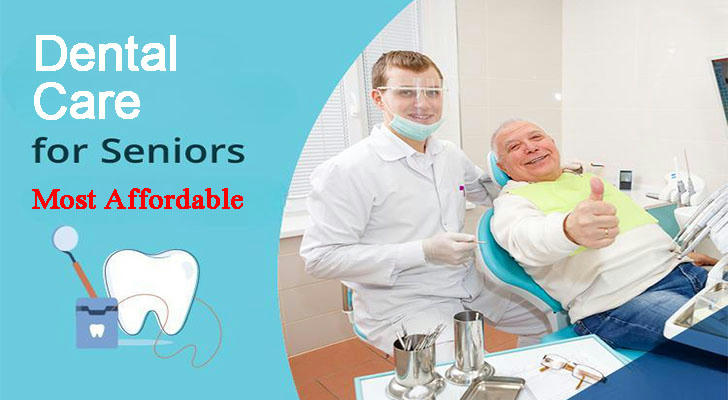Senior Dental Care Savings Guide: Where to Find the Most Affordable Services
Dental health is vital for seniors 50 and older, yet high costs often block needed care.According to the Centers for Disease Control and Prevention (CDC), nearly 27% of adults over 65 have untreated tooth decay due to expense. Fortunately, various benefits, discounts, and affordable dental care options are available for older adults. This article explores what dental care savings seniors can access, price comparisons by age groups, where to find affordable dental services, and how to apply for them.

What Dental Care Benefits, Discounts, and Offers Are Available for Seniors?
Seniors have access to several types of dental care savings, including:
- Government-Backed Dental Benefits: Medicaid provides dental coverage in many states, but the scope varies widely. For example, 21 states offer some adult dental benefits through Medicaid, including preventive and restorative services, though some limit care to emergencies only. This variation makes it essential to check your state’s specific program.
- Income-Based Discounts: Community Health Centers (CHCs) offer dental care with fees scaled according to income, making services more affordable for low-income seniors. The Health Resources and Services Administration (HRSA) reports over 1,400 CHCs across the U.S. providing dental care to underserved populations.
- Volunteer and Charitable Programs: The Dental Lifeline Network offers donated dental services to seniors who meet specific financial and medical criteria. Since its inception, it has provided over $500 million in donated dental care nationwide.
- Educational Clinics: Many dental schools operate clinics where students provide treatment under faculty supervision. Services here can cost 50-70% less than typical dental offices.
- Dental Discount Plans: Plans offered by organizations like AARP and other providers give seniors reduced rates on dental services, often saving up to 60%.
Most Affordable Dental Care Prices by Senior Age Group
| Age Group | Typical Lowest Cost Dental Services | Estimated Cost Range* | Notes |
|---|---|---|---|
| 50-59 | Basic cleaning, exam, X-rays | $80 - $150 | Preventive care to avoid major procedures |
| 60-69 | Fillings, extractions | $100 - $300 | Common restorative treatments begin |
| 70-79 | Partial dentures, root canals | $300 - $1,000+ | Increased need for prosthetics and complex care |
| 80+ | Full dentures, implants** | $700 - $3,000+ | Advanced procedures, possibly subsidized |
*Costs vary by location and provider.
Implants are generally more expensive but may be available at reduced cost through dental schools or specific programs.
Real-World Examples of Affordable Senior Dental Care
- Case 1: "My back tooth filling fell out, and I worried it would cost over a thousand dollars. But with a senior care plan, it only cost $200—now eating feels easy again!"
- Case 2: "The dentist told me a filling would be $600, but with a senior care program I only paid $150. The money I saved was enough to enjoy a nice dinner!"
- Case 3: "I needed a root canal and thought it would cost $1,200. Thanks to a senior discount program, it was just $400. I saved money and regained my chewing ability!"
- Case 4: "A regular cleaning usually costs me $200, but with the senior care plan I only paid $60. My teeth felt fresh and my whole body felt lighter!"
- Case 5: "My old dentures became loose, and repair was originally priced at $900. With the senior program, I only spent $300—now I can eat comfortably again!"
Where to Find the Most Affordable Dental Care Services?
- Medicaid-Participating Dentists: Seniors should verify their state’s Medicaid adult dental benefits and locate participating dentists. Coverage varies significantly, so direct consultation with state Medicaid offices or websites is advised.
- Community Health Centers: Use federal or state resources to identify local CHCs offering dental services with income-based fees.
- Dental Schools: Contact nearby dental schools for low-cost clinics offering a range of dental treatments supervised by licensed professionals.
- Nonprofit Dental Programs: Apply to programs such as the Dental Lifeline Network, which serve low-income and medically fragile seniors.
- Dental Discount Plans: Consider enrolling in discount plans from reputable providers, which reduce out-of-pocket costs.
How Can Seniors Apply for the Most Affordable Dental Care?
- Assess Eligibility: Check income, age, and residency requirements for Medicaid and charitable programs.
- Locate Providers: Use official directories like Medicaid provider lists, Health Center locators, and dental school listings.
- Prepare Documentation: Gather proof of income, age, and residency before contacting providers.
- Apply for Services: Submit applications where required, especially for volunteer and donated care programs.
- Maintain Care: Keep dental records updated and attend follow-up appointments to ensure continued access.
Conclusion
Access to affordable dental care is critical for seniors to maintain both oral and overall health. By understanding the available benefits, discounts, and service options — including Medicaid programs, community health centers, dental schools, and nonprofit initiatives — seniors can navigate dental care costs effectively. Taking proactive steps to apply for these programs and explore local resources can substantially reduce financial strain, enabling seniors to preserve their smiles and improve quality of life.
